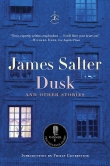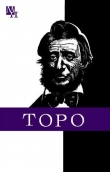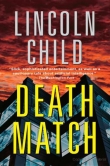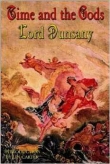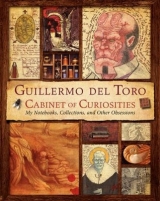
Текст книги "Cabinet of Curiosities: My Notebooks, Collections, and Other Obsessions"
Автор книги: Guillermo del Toro
Соавторы: Marc Scott Zicree
Жанры:
Публицистика
,сообщить о нарушении
Текущая страница: 6 (всего у книги 17 страниц)
They gave me a few notes, and they said, “If the girl really loves books, we should see her reading more often.” But you don’t need that. I mean, I love books, but you never see me with a book on the street. I read them at night, or I read them in the morning. I didn’t carry them around. I said, “The way I show the depth and the breadth of her imagination is when she makes up a story to the baby brother in her mother’s belly.” Because she’s not reading the story, she’s telling it. So that tells you how much she has read, but without doing it directly.
MSZ: Let’s talk a little bit about your storytelling techniques. There is a great thing you once wrote: “The epic is a vital genre for humanity.”
GDT: A lot of people think that in epics one character almost represents an entire race; the whole race is imbued in one character. Borges does that a lot. Borges talks a lot about a man who is “the” man that represents Argentina at a certain moment. In a strange sense, for me, I Am Legend is an epic because it really represents both the rise of a new civilization and the falling of another one, becoming a legend.
MSZ: It’s the microcosm that speaks to the macrocosm.
GDT: Yes. But the interesting part of that book, for me, was the fact that Richard Matheson brings the urban into horror, revitalizing it. This is not Transylvania; this is not a castle. This is the streets of an American city. What was really incredible is that I Am Legend is a very metaphysical book, in the same way that his The Shrinking Man is a very metaphysical book. The fact that somebody we have empathy with is not the winner, historically, and therefore they become the monster, the loser, the legend: “If you’re not good, the human will come for you at night.” I mean, there is a whole society of vampires outside, which he manages to show us are the antagonists. But at the end of the book you realize, “Holy crap! We are the anomaly. We are the legend.” That’s fantastic! I don’t think it’s ever been done in the movie versions.
The ending of The Shrinking Man is almost like Albert Camus. The final notion in the book is that you abandon yourself to the cold embrace of the cosmos. It’s . really fantastic.
MSZ: In that regard, two interesting things about Matheson are that he has a very strong belief in an afterlife—a very strong belief in a larger reality than the prosaic one—and in many of his books he uses himself as the main character and his family is the family in the book. He’ll often name the wife Ruth because his real wife’s name is Ruth.
GDT: Well, everybody does that. I mean, everybody that writes. Anybody that doesn’t do it, I don’t understand how they write. The same can be said of most everyone. Borges, certainly. And in a strange way—very, very twistedly—I think all the children in Dickens are sort of him in a shoe polish factory thinking, I deserve better. I think Mary Shelley is in Frankenstein big time, and so on and so forth. That is beautiful. Roald Dahl does it. H. P. Lovecraft more than anyone. And Stephen King.

The almost hyperbolic depiction of violence against children hearkens back to a tradition of children’s storytelling that is not afraid of the dark side.
King and Matheson are two writers I really love because they not only bring the urban and the suburban to horror, they bring in, brilliantly, family dynamics. This is interesting because horror, during the pulp years, was always about superlative characters: a professor, a reporter, an archaeologist. They were not regular people. Fritz Leiber does a little bit more urbane characters. But Matheson, starting with the family man in The Shrinking Man, is talking about the dynamics in a marriage, how they change. He becomes a child, a baby, and his desires are no longer acknowledged. He becomes a toy. The family dynamics in I Am Legend are gorgeous—how he loses everything, and how his best friend is every night outside of the house screaming his name. Matheson and King bring you people that go to the supermarket, fill their car with gas, take their children to school. And they put them in situations you can be absolutely scared shitless about.
MSZ: You mentioned Roald Dahl. He seems, in some ways, to be a spiritual relative of yours because, even in his writing for children, his work has enormous darkness.
GDT: Most of the great writers of children’s literature have a very dark side. Some of them are very repressive. Carlo Collodi is very repressive, for example, but I still love him. I also think Oscar Wilde and Hans Christian Andersen deal with a lot of identity issues, and they are present in a very dark and fascinating way in the tales. Strangely enough, both have these almost psychosexual dramas in their stories. Like Andersen’s “The Snow Queen.” As a kid, I found it enormously sensual. I remember reading it and being vaguely disturbed and aroused as a kid. It really has a lot of strange images of snow, and it almost portrays death as an erotic goal, an experience. I mean, it’s really, really weird.
But Dahl, Saki—they all have something in common, which is that they create really, really great children’s tales that are really, really disturbing for parents. Parents often give children the Roald Dahl books thinking, Oh, they’re safe. But they’re full of great violence. I mean, The BFG? There’s more descriptions of ways to consume a child, and brutality, than anywhere else. It’s fantastic. And The Witches, where the witches sing something like, “Boil them, fry them, chop ’em.”
The reality is that kids are not bothered by these things. So I was sad that Pan’s Labyrinth didn’t get a PG-13 [it is rated R]. I think it should have gotten a PG-13 because the violence in the movie is part of the tale. As disturbing as it is, it is part of the flavor. We couldn’t get it. But, in my mind, Pan’s Labyrinth is a movie done from me to young readers, so to speak.
GUILLERMO’S MAINSTAYS OF HORROR
TO LEARN WHAT WE FEAR is to learn who we are. Horror defines our boundaries and illuminates our souls. In that, it is no different or less controversial than humor, and no less intimate than sex. Our rejection or acceptance of a particular type of horror fiction can be as rarefied or kinky as any other phobia or fetish.
Horror is made of such base material—so easily rejected or dismissed—that it may be hard to accept my postulate that within the genre lies one of the last refuges of spirituality in this, our materialistic world.
But it is a fact that, through the ages, most storytellers have had to resort to the fantastic in order to elevate their discourse to the level of parable: Stevenson, Wilde, Victor Hugo, Henry James, Marcel Schwob, Kipling, Borges, and many others. Borges, in fact, defended the fantastic quite openly and acknowledged fable and parable as elemental forms of narrative that would always outlive the much younger forms, which are preoccupied with realism.

A display devoted to Edgar Allan Poe at Bleak House.
At a primal level, we crave parables, because they allow us to grasp the impossibly large concepts and to understand our universe without and within. These tales can “make flesh” what would otherwise be metaphor or allegory. More important, the horror tale becomes imprinted in us at an emotional level: Shiver by shiver, we gain insight.
But, at its root, the frisson is a crucial element of this form of storytelling—because all spiritual experience requires faith, and faith requires abandonment: the humility to fully surrender to a tide of truths and wills infinitely larger than ourselves.
It is in this abandonment that we are allowed to witness phenomena that go beyond our nature and that reveal the spiritual side of our existence.
We dislocate, for a moment, the rules of our universe, the laws that bind the rational and diminish the cosmos to our scale. And when the world becomes a vast, unruly place, a place where anything can happen, then—and only then—we allow for miracles and angels, no matter how dark they may be.
MARY SHELLEY (1797–1851)
Much like Matthew G. Lewis, who was only twenty years old when he wrote The Monk, Mary Shelley was painfully young—a teenager, in fact—when she first published Frankenstein, or the Modern Prometheus, and into the monster and his tale she was able to pour all her contradictions and her questions—her essential pleas and her feelings of disenfranchisement and inadequacy. The tale spoke about such profound, particular feelings that, irremediably, it became universal.
While reading the novel as a child, I was arrested by the epistolary form Shelley had chosen (and which Bram Stoker would use in Dracula to good effect many decades later), because it felt so immediate. I was overtaken by the Miltonian sense of abandonment, the absolute horror of a life without a reason. The tragedy of the tale was not dependent on evil. That’s the supreme pain of the novel—tragedy requires no villain.
Frankenstein is the purest of parables—working both as a straight narrative and as a symbolic one. Shelley utilizes the Gothic model to tell a story not about the loss of a paradise but rather about the absence of one.
The novel is so articulate and vibrant that it often surprises those who approach it for the first time. No adaptation—and there are some masterful ones—has ever captured it whole.
Taking its rightful place among the essential characters in any narrative form, Frankenstein’s creature goes beyond literature and joins Tarzan, Sherlock Holmes, Pinocchio, and Monte Cristo in embodying a concept, even in the minds of those who have never read the actual book.
EDGAR ALLAN POE (1809–1849)
Clearly, the horror tale deals with the essential duality of mankind, a topic that has proved irresistible to philosophers, prophets, and saints. The Adamites, the Dulcinians, and other savage orders advocated salvation through Bosch-like excess and violence—and they all situated the root of all evil in the soul. It is not until Poe that the seat of evil is transferred back to its proper place: the human mind.
It is in Poe that we first find the sketches of modern horror while being able to enjoy the traditional trappings of the Gothic tale. He speaks of plagues and castles and ancient curses, but he is also morbidly attracted to the aberrant intellect, the mind of the outsider.
Poe grappled with the darker side of mankind, with the demons that reside within us: our mind, a crumbling edifice, sinking slowly in a swamp of decadence and madness. He knew that a rational, good-hearted man could, when ridden by demons, sink a knife in the eye of a beloved cat and gouge it out. He could strangle an old man or burn alive his enemies. He knew that those dark impulses can shape us, overtake us, make us snap—and yet, we would still be able to function, we would still presume to possess the power of rational thought.
ARTHUR MACHEN (1863–1947)
It is a rare breed of fabulist who transcribes and records—rather than invents—a reality invisible to most of us. These scribes, like St. John the Divine, are possessed of a near-religious certainty that such worlds exist. Arthur Machen was one of these.
Much like Algernon Blackwood, Machen had no doubts about ancient worlds beneath us and the power their inhabitants exert over our souls and, ultimately, our flesh. There are, he knew, barbarians at the gate, hiding somewhere in the darkness below.
Much like Borges, Machen was an acolyte of Robert Louis Stevenson, one of the most painstaking writers in the English language. And also like Borges, Machen seemed to believe that reading and writing are a form of prayer, each an extension of the other. But where the world was a library to Borges, to Machen it was an all-encompassing concrete geography, even as he was fascinated by traces of pre-Roman cults. Today, as then, his words are neither scholastic nor philosophical, but rather an alarm, a frantic denunciation.
Machen recorded his articles of faith with great zeal as an explorer in a lonely spiritual universe. He abandoned the safety of his humble quarters, the sanctity of his God-given name, and the veneer of metropolitan sophistication to achieve an ecstatic vision. Much like Lovecraft, he believed in the transitory nature of our agency in this world and the unyielding ferocity of the cosmos.
Machen knew that to accept our cosmic insignificance is to achieve a spiritual perspective and ultimately realize that, yes, all is permitted. And that no matter how wicked or how perverse we can be, somewhere in a long-forgotten realm a mad God awaits, leering—ready to embrace us all.
H. P. LOVECRAFT (1890–1937)
One hot summer afternoon (I must have been eleven or twelve years old), I stumbled upon the text of the Lovecraft story “The Outsider.” I was riding in the family car, and the text was included in Spanish in an anthology for my older brother’s lit class. I started to read, and almost an hour later, I was left behind in the car, still reading, oblivious to the inclement heat, mesmerized and moved by this story.
Starting that afternoon, and for the rest of my life, I have devoted more time to Lovecraft than virtually any other author in the genre. His mannered, convulsive prose, so antiquated and yet so full of new ideas, is very compelling to a young writer for the same reason Bradbury’s is—it seems easy to forge. It is so clear, so full of evident quirks, that you long to imitate it, and it is then that you find out how full of secrets his prose can be.
Lovecraft’s crown jewel is, in my opinion, “At the Mountains of Madness.” Reading this tale in my mid-teens was a revelation. I had never been exposed to any literature that so dwarfed our existence and hinted at the cold indifference of the cosmos. I became entirely enamored. Making a film of it became my quest.

“Fear at the Foot of the Bed,” an image that has haunted del Toro since his childhood, as it appears on Notebook 3, Page 28B.
IDEA INCUBATORS
MSZ: These notebooks are very personal, of course. What prompted you to have this material published?
GDT: I started the notebooks a long time ago. More and more, people have heard about them and become curious about them. I started putting a few pages on some of the DVDs of my films because we were running out of extras. I think the first time we put the notebooks on a DVD was Blade II. People reacted very well. At one point I thought, there are a few personal moments in them, but they were moments that were public in some way because I seldom record stuff that is truly personal.
MSZ: I love when there are little personal asides. They give context to all the ideas that are in the notebooks.
GDT: One of the really, really great ones is on one of the first pages of the lost Cronos notebook. It says, “March 3, ’93.” That is the day when Bertha Navarro, my producer, spoke with Imcine, the Mexican film institute, and the guy in charge said, “Cronos is a horrible movie. It will go to no . festivals, it will win no awards, nobody will ever want it, and it will be forgotten soon enough.” And instead of getting angry or whatever, I just wrote it down and said, “This is an important day in case I can ever prove the guy wrong.” And it was 3/3/93, and it’s in that book. But unfortunately, the book got lost.
Losing things is part of the process, too. That’s why, every time I talk publicly, I always say it’s really important in our life to have talismans. Like my car. We call him the Handsome One. Every day, when I’m riding in it, I’ll have a moment where I love my car. I go, “I love you.” You imbue these things with power.
If you have a really great relationship with an object, if something happens to it, it’s part of the story. Because you’re collecting memories, or experiences, and that event becomes part of the tale.
MSZ: That raises a question I’ve had: Who are you writing these notebooks for?
GDT: For my daughters. When they are grown-ups and they have lives of their own, children of their own, or whatever, they can look at the guy that was their father when he was young. I want them to understand that being a grown-up is not being boring. It’s being alive. I want them to know that grown-ups are people, too.
MSZ: Have they seen the notebooks? Have they had a chance to look at them?
GDT: You know, they look at them now and then, but they draw manga-style, so they find my drawings absolutely reprehensible and horrible. But it doesn’t matter. I told them, “I want you to enjoy them if you can."
MSZ: There’s a wonderful playfulness in the notebooks. For example, you write about the need to fill empty space. Is that something that you still do with your notebooks? Do you sometimes just try to fill up the page, to make a beautiful page?
GDT: I do. There are definitely moments when the writing becomes part of the design. I’m very glib about it. I’ll write things like, “This means nothing. It’s just to fill the space."
MSZ: Well, you write, “No doubt the need to fill all available space is Freudian and very serious."
GDT: Yeah, because I do it out of compulsion. Literally, I just say, “I need a line over here,” and I don’t want to wait for an idea to write the line, so I fill the space.
MSZ: Speaking about the composition of the notebook pages: Do you ever sketch something in advance in pencil?

The Handsome One, del Toro’s car, which he regards as a kind of talisman.

A spread in del Toro’s fourth notebook (Notebook 4, Pages 37A and 37B) mixes ideas for Hellboy II with a more playful drawing for a series of illustrations del Toro calls “Children with Problems.” Frequently, del Toro skips from project to project in the notebooks, illustrating and writing about a variety of ideas that are at different stages in his creative process.

Del Toro at work on his current notebook in the Comic Book Library at Bleak House.
GDT: I do. I sketch, write notes in pencil, and then, if I do a drawing, I try to organize the notes around it.
MSZ: So you’re typically writing in pencil, and then you fill it in with ink as it becomes a finished page?
GDT: I draw faster than I write. Like, I might be five pages ahead of the writing with the drawing. So I write around the drawings, which means the images and text connect only tangentially.
Sometimes I’ll even do a drawing just to try a new set of colors, which has become a lot easier. When I started the Blue Notebook after Cronos, for example, I had zero money, and I would draw with four Prismacolor pencils. If I wanted a purple, I needed to shade that purple by combining colors, and if I needed a certain hue of green, I would find a way to do it with the same four pencils. It was very time consuming, you see? But it actually made me appreciate and learn the value of each of the basic colors of the spectrum and now, when I do film color correction, I am fast and precise.
Then, if you look at the Pan’s Labyrinth pages and some of the Hellboy II drawings, you’ll see I used acrylic. It’s a very heavy medium, and you need to put time aside for it, too.
I now have these alcohol markers, and they’re very quick. They are my favorite medium. Not only can I do a drawing fast, but I can start a drawing, put it aside, and then come back to it.
MSZ: Has that change in medium affected how you approach the notebooks?
GDT: Yeah, because now, with the markers, I can do a drawing in thirty minutes, whereas before, with acrylic, I would need, like, an hour. I’m self-taught, so the way I figured out how to use acrylic was to start with the darker shade and then add highlights. But with markers, you start with the lightest shade, and then you start adding darker, and darker, and darker colors. At the end, if you need it, you can put a layer of highlights on. It’s much faster.
MSZ: Besides experiments with color, how do you determine what you put in a notebook and what you don’t?
GDT: Honestly, I don’t think about it. If I’ve already given instructions to a sculptor, or I’ve already talked to the designer about a concept, I don’t put it in the book because it’s not a journal, really.
MSZ: What about the blood splotches and so forth, those elements that give the notebooks a sort of vintage quality?
GDT: What I was trying to do in the third notebook, in particular, was make it feel like a found object. I was doing these long, drawn letters, with long bottoms and flourishes. But it became very tiresome, and after a number of pages, I said, “Oh, screw this.” But during that time, I found the right color for the blood, and I thought it looked good to have it, so that it started to look like a found grimoire.
What is interesting is that I tried, most of the time, to do a little composition on each page. That’s why the blood helps now and then, or a little Lovecraftian symbol here and there.
MSZ: So your composition is really localized to a single page.
GDT: Yeah. And I actually try to do a composition across facing pages a lot of the time, although I’m often working with multiple projects at once. I don’t always succeed, but I try to make it coherent.
I like to say that we make only one movie in our lifetime—a movie made of all the images of all our movies. I believe this is true of Hitchcock, for instance. Hitchcock made a single, giant, symphonic movie. You can see Hitchcock trying a thing in one movie and cannibalizing it later. I think this is true of many great filmmakers that I admire. But I also think it’s true of guys that are consistent with themselves. Not that they’re good or bad; they’re just consistent.
I think these books are important to me because they narrate the story of that single movie I’m trying to make. So the composition in them, the colors, everything is important to me in the same way that Bleak House is. The house is in all of my movies—not only the ones I’ve done, but the ones I want to do if I’m lucky enough to survive a few years.
MSZ: Looking at Bleak House, your notebooks, and your films is like walking through your head.
GDT: Exactly. When you see a photo of Francis Bacon’s studio, for instance, the floor is thick with colors. You see not just the color, but the vigor of the brushstrokes. You go, “This is a single, forceful, incredibly precise beautiful brushstroke, or a passionate brushstroke.” In the case of Bacon, I think they should exhibit the studio and the paintings because you’re going to see just how much paint ended up on the floor. Or when you see a Van Gogh in person, the reason they are impressive is how thick with paint they are. You can imagine the guy almost unable to stop himself to get there with the next brushstroke full of paint.
MSZ: To get back to the notion of the single film: I really love the juxtaposition of projects in your notebooks, where you migrate inspiration from one project into another, or you’ll find a motif for one that doesn’t show up in that movie, but then you use it later.
GDT: Before I start shooting a movie, I read all the notebooks. They travel with me. I consider the notebooks a catalog, and that’s why I try to explain to people that these are not necessarily the organized notes of a linear thinker. They’re the opposite. The notebooks are a catalog—like a mail-order catalog of ideas that I turn to when I’m low on ideas.
I’ve always got five projects because, statistically, if you have a number of projects, one eventually happens. When I concentrate on a single thing, that’s when I get blocked creatively. The mental promiscuity of having four or five things going at once in the notebooks makes them feed off one another. So I go, “That idea is great for Mountains of Madness! That idea is great for—” And I can keep the ideas and the projects alive that way.

Del Toro embellished Notebook 3 (here open to Pages 22A and 22B) with splotches of fake blood and Lovecraftian symbols.

